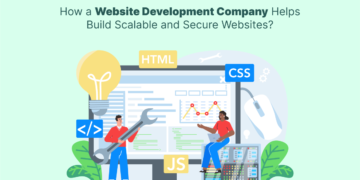Salesforce is a powerful, cloud-based CRM platform that businesses use to streamline sales, marketing, and service workflows. One of its key strengths is flexibility: you can tailor Salesforce to your unique needs in two main ways. Configuration uses Salesforce’s built-in, point-and-click tools (no code) to adjust settings, while Salesforce customization involves developers writing custom code to add or change features. Decision-makers and admins should understand these approaches to pick the right method and maximize ROI. For example, you can configure page layouts and workflows with clicks, whereas Salesforce customization often requires writing Apex classes or Lightning components to implement new functionality. In this blog we’ll break down what each method means, give examples, and explain when to use which.
Also Read: Expert Salesforce Implementation Guide
What is Salesforce Configuration?
Salesforce configuration means adjusting the system’s settings and features using the platform’s built-in, declarative tools – with little or no code. In practice, configuration is done by administrators in Setup: you click through menus to change page layouts, create workflows, set security rules, and more. Configuration is generally easier and faster because it reuses Salesforce’s out-of-the-box capabilities. As one source explains, if you’re performing the process of a function within Salesforce, it’s a configuration (for example, automating a standard approval or designing a report).
Common examples of configuration tasks include:
- Page Layouts and Fields: Add, remove or reorder fields, buttons and related lists on record pages.
- Automation and Processes: Set up workflow rules, Flow/Process Builder automations or simple approval processes using clicks (e.g. email alerts, field updates).
- User Permissions and Security: Manage user profiles, roles, and sharing rules to control who can see or edit records.
- Reports and Dashboards: Use Salesforce’s built-in report builder and dashboard tools to visualize data, turning features on/off in the interface as needed.
- Email Templates and Branding: Customize standard email templates, picklist values, and even the look of page layouts to match your branding, all without writing code.
Because configuration uses Salesforce’s native tools, it’s usually low-risk and easy to maintain. Changes made this way automatically adapt to most Salesforce upgrades, and you often don’t need a developer to do it. In fact, Salesforce configuration can often be done by admins or power users after a bit of training.
What is Salesforce Customization?
By contrast, Salesforce customization is when you extend or alter Salesforce by writing custom code or using developer tools to build new functionality. This goes beyond what point-and-click settings allow. As SalesforceBen defines it, customization means changing out-of-the-box Salesforce components or adding newly developed pieces to adapt the CRM system precisely to a company’s demands. This method requires code-level modifications to alter the default Salesforce environment. In other words, customization (sometimes called custom development) is all about software development – Apex, Visualforce, Lightning components, custom APIs or middleware – to create features that Salesforce doesn’t provide out of the box.
Common examples of Salesforce customization include:
- Custom Objects, Fields & Apex Code: Developers can create entirely new custom objects and add fields, and write Apex classes or triggers to implement complex business logic that standard workflows can’t handle.
- Advanced Automation: For multi-step processes or data processing that standard Process Builder can’t achieve, Apex triggers and batch jobs or custom Flow actions can automate tasks like bulk updates or complex record updates.
- Custom UI (Visualforce / Lightning): Build unique user interfaces – such as branded Lightning pages or Visualforce pages – that aren’t possible with standard page layouts. For example, you might build a specialized dashboard or entry form with custom code for better user experience.
- Integrations and APIs: Write custom middleware, plugins or use APIs to connect Salesforce to external systems (ERP, eCommerce, marketing tools, etc.) beyond what standard AppExchange connectors offer. This ensures data flows between Salesforce and other applications in tailored ways.
- Custom Applications: Develop full apps on the Salesforce platform (using Salesforce Connect, Heroku, or managed packages) that address unique needs – for example, a custom partner portal or IoT dashboard tied into your data.
Because customization involves coding, it requires skilled developers and usually takes more time and resources. It’s also typically more complex: custom code must be tested and maintained. As Ascendix notes, Salesforce customization is usually more complicated, and, as a result, a more expensive effort compared to configuration. On the plus side, customization offers unlimited flexibility: you can build virtually any feature or logic with code.
Key Differences at a Glance
In summary, configuration and customization differ mainly in how changes are made and what they cost/time. Here are some key contrasts:
- How It’s Done: Configuration is declarative (point-and-click) – admins use Salesforce setup UI with no code. Customization is programmatic – developers write Apex, Lightning/Visualforce, or code to create features.
- Implementation & Speed: Configuration is generally faster and simpler to implement, since you’re using out-of-box tools. Customization involves software development cycles (writing, testing, deploying code), so it takes longer.
- Cost & Resources: Configuration usually costs less because you need only admins or consultants (point-and-click work). Customization requires developers and has higher development/maintenance costs.
- Flexibility: Configuration can only do what Salesforce’s standard platform allows (good for common needs). Customization has no inherent limits: any new feature or logic can be coded as needed.
- Maintenance & Upgrades: Declarative changes typically stay compatible with Salesforce releases, making future upgrades easier. Custom code may break with updates, so it requires ongoing maintenance and testing when Salesforce changes.
These differences mean that each approach has its ideal use-cases.
When to Configure or Customize
Deciding which path to take depends on your business needs, timeline, and resources. In general:
- Use Configuration when: your requirements fit within Salesforce’s built-in features and you want to move quickly or save cost. For example, if standard fields, workflows and page layouts meet your needs, an admin can configure them without code. This is often ideal for startups or teams new to Salesforce that need a fast deployment.
- Use Customization when: you have complex or unique requirements that out-of-box tools can’t handle. For instance, if you need a special user interface, custom approval algorithms, or integrations not supported by standard connectors, you’d need custom development. Customization makes sense when you have developer talent and enough budget/time to build tailored solutions.
It’s common to use both approaches together: start with configuration for basic setup, then add customization for advanced features. As one expert advises, consider your long-term goals and resources: if built-in tools don’t fully accommodate a workflow, or if you need unique reporting and integrations, that’s when Salesforce customization is the optimal choice. Conversely, if Salesforce’s out-of-the-box features largely satisfy your process, it’s best to stick with configuration and administrative best practices.
Conclusion
Both Salesforce configuration and customization are effective ways to tailor Salesforce to your business. Configuration (declarative changes) is lower-cost and faster for common requirements, while customization (custom development) offers limitless flexibility for special needs. As Salesforce Ben summarizes, each technique has its place in aligning the platform to your goals. In practice, most organizations start with configuration and then engage in Salesforce custom development for features that require coding. For example, building a unique Lightning component or an Apex-based integration is part of Salesforce custom development. By balancing these methods — using clicks where possible and code where needed — businesses can maximize their Salesforce investment and create a CRM solution that best fits their needs.



























